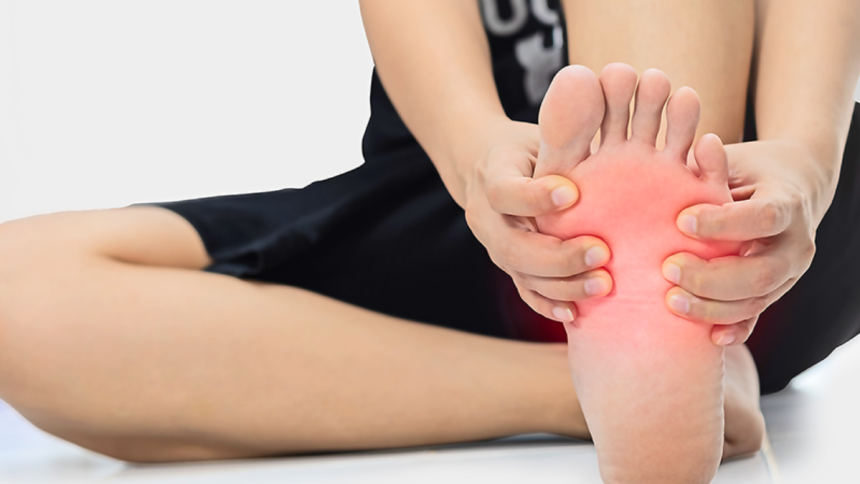Foot pain isn’t just a minor inconvenience—it’s the kind of discomfort that turns every step into an ordeal. It sneaks up on you after a long day, makes getting out of bed a struggle, and can completely derail your ability to move comfortably. And once it starts, it doesn’t just stay in your feet. It changes the way you walk, affects your knees, messes with your hips, and before you know it, your entire body feels out of whack.
If you’re dealing with aching arches, sharp heel pain, or constant soreness, you’re not alone. Whether it’s plantar fasciitis, overworked tendons, or simple wear and tear, foot pain can hit anyone at any time. But the good news? You don’t have to live with it. The right habits, support, and care can make a massive difference—not just for your feet but for how your entire body feels.
Why Your Feet Are Working Against You
Most people don’t think about their feet until they hurt, but by then, the damage is already done. The truth is, your feet are carrying the full weight of your body all day, absorbing shock, adjusting to uneven surfaces, and taking hit after hit—especially if you’re walking, standing, or exercising regularly.
The problem starts when the muscles, ligaments, and tendons in your feet get overworked. Poor arch support, tight calf muscles, or simply wearing the wrong shoes can strain the plantar fascia—a thick band of tissue along the bottom of your foot—leading to inflammation and pain. And once that pain sets in, it doesn’t just go away on its own. It lingers, spreads, and starts affecting how you move, forcing your body to compensate in ways that create even bigger problems down the line.
The worst part? Many people try to tough it out, hoping it will magically get better. But foot pain isn’t just an annoyance—it’s a sign that something needs to change.
The Game-Changer for Heel and Arch Pain
If you’ve ever dealt with foot pain, you’ve probably heard plenty of generic advice: stretch more, ice it, rest when you can. And while those things help, they don’t fix the real issue. When the foundation of your body isn’t properly supported, everything else suffers. That’s why finding the best insoles for plantar fasciitis is one of the first things you should do.
Most shoes aren’t designed with long-term foot health in mind. They might look good or feel comfortable for a while, but they don’t provide the kind of structured support your feet actually need. Without the right cushioning and stability, your arches collapse under pressure, your heels absorb too much shock, and your entire foot mechanics get thrown off balance.
A high-quality insole changes everything. It redistributes pressure, reduces strain on the plantar fascia, and keeps your foot properly aligned with every step. And when your feet are supported correctly, it doesn’t just relieve pain—it prevents it from coming back. The right insole makes walking, running, and even just standing for long periods feel noticeably better. It’s a simple fix that has a massive impact on your daily comfort.
When Foot Pain Spreads
Foot pain rarely stays in one place. The way you walk and stand directly affects your ankles, knees, hips, and even your lower back. Once you start compensating for foot pain—whether by limping slightly, shifting weight to the other side, or changing how you land with each step—you create a ripple effect throughout your entire body.
Over time, that leads to common joint problems that weren’t even on your radar before. Your knees absorb extra stress, your hips become misaligned, and your lower back starts aching from the imbalance. The longer it goes on, the harder it becomes to undo the damage.
That’s why treating foot pain isn’t just about fixing your feet—it’s about protecting the rest of your body, too. The more you support your foundation, the better your entire musculoskeletal system functions. And that means less pain, better movement, and a healthier body overall.
Small Daily Changes That Make a Big Difference
Foot pain isn’t something you can afford to ignore, but fixing it doesn’t have to be complicated. Small, consistent changes in your daily routine can make all the difference in preventing and managing discomfort. Stretching your calves and feet regularly keeps your muscles and tendons flexible, reducing strain on the plantar fascia. Strengthening exercises improve stability and reduce the likelihood of overuse injuries.
Wearing shoes with proper support—not just stylish ones—keeps your arches lifted and your feet aligned. And if you spend long hours standing or walking, giving your feet a break whenever possible helps prevent unnecessary strain. Foot pain might start small, but without the right care, it quickly spirals into a much bigger issue. Taking care of it now means avoiding years of unnecessary discomfort later.
Walking Without Pain Is Possible
Pain has a way of making even the simplest things feel impossible, but foot pain doesn’t have to control your life. Whether it’s aching heels, sore arches, or general discomfort that refuses to go away, the right support can turn things around faster than you think. By paying attention to what your feet need, investing in the right solutions, and making small adjustments to your daily habits, you can move freely and comfortably again. Your feet are working for you every single day—it’s time to start working for them, too.
Lynn Martelli is an editor at Readability. She received her MFA in Creative Writing from Antioch University and has worked as an editor for over 10 years. Lynn has edited a wide variety of books, including fiction, non-fiction, memoirs, and more. In her free time, Lynn enjoys reading, writing, and spending time with her family and friends.















